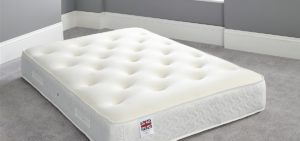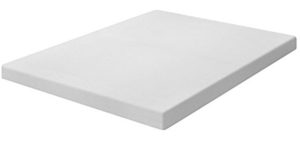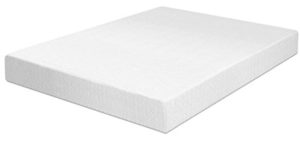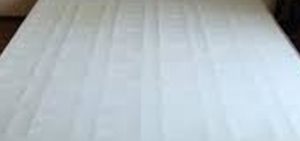Like everything in this world, the mattresses we sleep on also undergo constant innovation. With the motive of helping the end-user get the best sleeping experience, the manufacturers pump in a lot of capital to create the best product.
However, it only makes things confusing for the end-user to understand these advancements’ differences and benefits. If you also feel the same regarding the Latex vs. Memory Foam Mattress, and cannot decide between the two, read on.
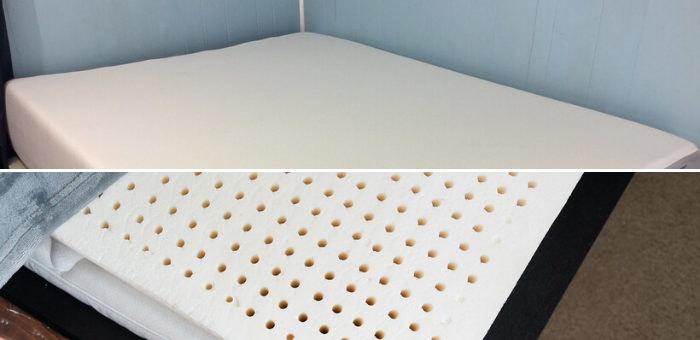
What are Memory Foam Mattresses?
As the name suggests, the Memory Foam mattresses can align with the shape of your body and ensure that you do not have to face any discomfort. When left vacant, the memory foam mattresses return to their normal shape.
How does it happen?
The answer is Polyurethane. With some innovative additions to polyurethane, the memory foam mattresses are made to be energy-absorbent. These mattresses’ dense nature further helps people with joint and back pains get a comfortable sleeping experience.
You must know the Memory Foam mattresses as they are with the help of chemicals. Not all of these chemicals are good for your health. Also, the presence of polyurethane is essential in every memory foam mattress. But, not every mattress with polyurethane does not have to be a memory foam mattress.
What are Latex Mattress?
Latex foams mattresses have a very short memory. This means that they will quickly take their original shape when you press against them and lift them. This factor plays a role in the lesser comfort levels of latex mattresses.
You will most commonly find two different latex types used to make mattresses. Synthetic and Natural Latex. You will also find a blend of these types to get a third variant of latex mattresses.
Comparing Memory Foam and Latex Mattress
Next, in our discussion on latex vs. memory foam mattresses, we will discuss both types in more detail. Let’s start with the construction and different mattress types under these two domains.
Construction and Types
Memory Foam Mattresses
In technical terms, the memory foam mattresses’ ability to jump back to their shape is called Viscoelasticity. Apart from polyurethane, various other chemicals help memory foam mattresses take shape. However, memory foam mattresses can have a wide set of properties.
They can have any form of firmness. We can also infuse different types of materials like gel, gel beads, copper, and graphite to diversify them. Based on these different sets of construction configurations, memory foam mattresses have different response times.
Different layers of materials are joined together to make a single piece of a memory foam mattress. It starts from the high-density supporting foam at the bottom to the gel foam at the top and between transition foam and viscoelastic foam. This is the basic configuration of memory foam mattresses.
Latex Mattresses
Latex mattresses are either all-natural, synthetic, or a mix of both. We can get any of the three types of mattresses based on the underlying process used to make them. These processes are:
- Dunlop Latex – The latex is poured into a pre-made mold. The required material is poured all at once. Hence, these mattresses have a greater density at the bottom and softness at the top.
- Talalay Latex – These types of latex mattresses are softer than Dunlop Latex mattresses. While preparing them, the mold is only partially filled with the required material and partially with air. This process gives the mattress the observed consistent softness throughout.
Comfort and Feel
Memory Foam Mattresses
One of the best things about the memory foam mattress is its ability to adjust to the body contour. Those who want a deep hug experience from their mattresses shall go for it. Their ability to adapt to the body structure is best characterized by the users suffering from body pains.
Latex Mattresses
Latex mattresses have a higher bounce and less compression than a latex mattresses. These mattresses are ideal for those who want a generalized sleep posture. The latex mattress has less precision when compared to the memory foam mattress in terms of contour.
Heat Retention
Memory Foam Mattresses
This is one of the most distinguished pitfalls of memory foam mattresses. They retain heat. Things like sweating and humidity are not very good companions of a memory foam mattress. However, the manufacturers can bypass this drawback with various cooling techniques.
When you hear that this mattress has infused cooling gel or has more open foam cells than others, that is not an inherent property.
Latex Mattresses
Latex foam mattresses are naturally aerated. Due to this, the heat passes through quickly instead of banking inside the foam. Hence, they retain less amount of heat and provide additional cooling. Furthermore, adding to this natural tendency to get rid of heat, these mattresses are made with extra air pockets when the foam is molded.
Firmness
Memory Foam Mattresses
If you would get your hands on a small piece of the memory foam mattress that fits in your foam, try to press it. You will feel less resistance. This is because memory foam mattresses are soft and spongy. Due to this, they take time to revert to the standard shape and adjust to the body contour better.
Latex Mattresses
Doing the same thing with the latex foam will lead to experiencing a pushback on your hand. Hence, this causes latex mattresses to be considered less comfy and sometimes even relatively hard.
Resistance to Dust, Mites, and Bacteria
Memory Foam Mattresses
Another difference between latex vs. memory foam mattress is that Memory foam mattresses are hypoallergenic. The sheets and mattresses we sleep on are full of mites, bacteria from sweat, and other bodily fluids, which can cause fiber allergies. Memory foam mattresses can protect you from such allergies and deters allergens to combat this.
Latex Mattresses
Latex mattresses are naturally resistant to mold and mildew. Furthermore, they are also resistant to bacteria. More importantly, natural latex is made from rubber trees that produce materials that can naturally fend off insects. Due to this, natural latex foam mattresses are resistant to dust mites.
Conclusion
This brings us to the end of our discussion on latex vs. memory foam mattresses. Both types of mattresses have distinct properties and characteristics. One set of properties is best for one segment of users, and the other is good for another set of sleepers. In the end, it depends on your needs and requirements. Plus, you are looking for the kind of experience from your mattress.
Table of Contents
